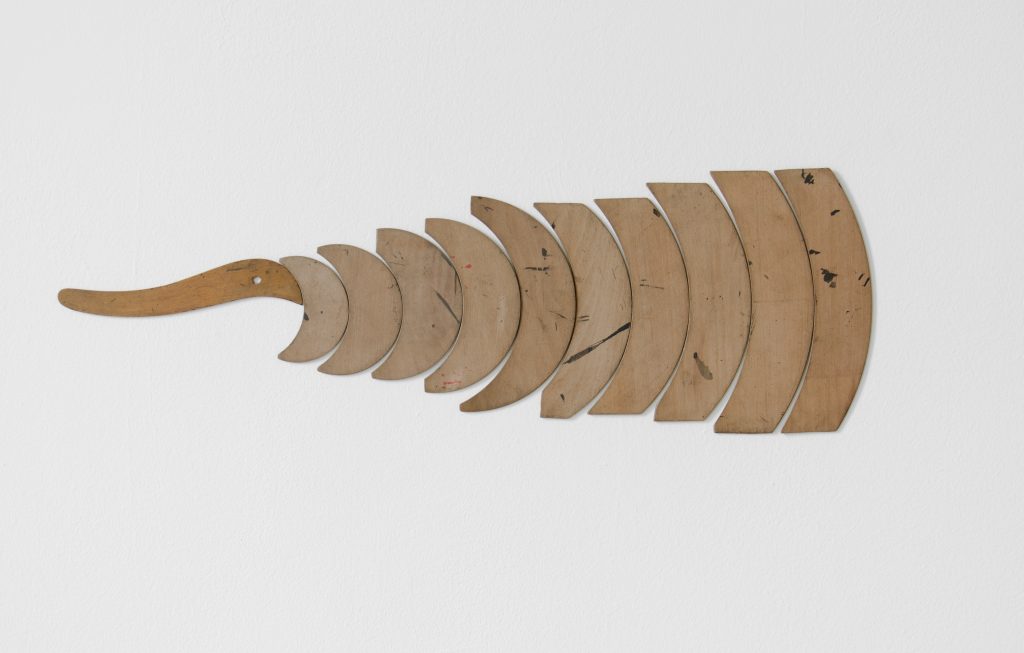Educator & artist Stuart Bennett considers fingers & hands and the altered power of touch under current new pandemic circumstances.
“The skin is a variety of contingency: in it, through it, with it, the world and my body touch each other, the feeling and the felt, it defines their common edge. Contingency means common tangency: in it the world and the body intersect and caress each other. I do not wish to call the place in which I live a medium, I prefer to say that things mingle with each other and that I am no exception to that. I mix with the world which mixes with me. Skin intervenes between several things in the world and makes them mingle.”
Michel Serres The Five Senses: A Philosophy of Mingled Bodies, 2008
As an artist and educator, I’m interested in articulating and demystifying the making process, particularly the use of the hand and tools and their trace in the fabrication of objects and images. While I write this I look at the computer screen with a stye in my right eye that alters my vision. The stye feels deceptively large. I know I must not touch it. It reminds me through my eyes, of what we know universally about touch during this pandemic. In our current contingency our hands have taken on a new threat.
The ‘double sensation’ (1) that the early 20th century French philosopher, Maurice Merleau-Ponty speaks of – the experience of one hand touching another, that palpable and vital sense of intertwining – is now replaced with a fear of touch and an unnatural withdrawal from an innate natural desire. Our fingertips contain a density of nerve endings and their differentiation is almost comparable to our eyes. If our fingers are not used during early years, it is possible to become ‘fingerblind’. This desire for sensory experience is inbuilt and has been compounded by the increased time in our daily lives we use computers. Even more so now, unsettlingly resettling next to a screen to meet, share a drink, commune and celebrate.

Photograph Harry Meadley
Skeuomorphism (an object or feature that mimics the design of a similar artefact made from another material) in the digital world, renounced by Apple for flat design some years ago, attempted to assuage our potential ‘touchblindess’. By recognising the relatively recent shift to the digital realm with less physical material such as notebooks, pens, maps, diaries and other utilitarian objects being used, initially images and sounds, then more touch related experiences such as vibrations and oscillations, started to animate our devices. But there is a vital difference in understanding the reality of something in and through the hands versus the screen. This disconnect and simulacra creates and highlights a tangible lack of feeling, even if the intention is towards a more tactile experience. These subtle features speak of a deep human urge to sense and feel.
Social distancing separates us and our hands. Our touch has a more powerful, viral intermingling and transference previously unimagined, either philosophically or pragmatically. Our trace through touch, the human sensorium that creates the most exacting surfaces, forms and images is now a danger to others. Will that sense of mixing that Serres speaks of ever become routine again? How will we feel about rummaging through crates of dusty vinyl or piles of old books? What will be the new approach to designing for an age that may need less, but desire more touch and sensory experience? And in what form will we greet, be collective, commune and find agency in cultural activity?
Of course this reads as a bleak and dystopian expression of our current context. Obviously there is more than resilience in the cultural sectors. As ever, there are challenges and opportunities to resolve, but this pandemic casts light on some previously innate, unquestioned precepts and practices. It makes us interrogate what we do and what it is for in reimagined ways. This intrinsic interventionist approach to cultural production will find new possibilities for our altered circumstances. A relentless redefinition of where our edges are, or should be, and our desire to be felt and leave an imprint is heightened. As my stye diminishes – a clear impediment to seeing clearly – I’m more keenly aware than ever of what it is like to feel ‘normal’ again.
(1) Phenomenology of Perception (1945), Maurice Merleau-Ponty, Donald A Landes (translator), Routledge (reprinted 2013)
Stuart Bennett is a Senior Lecturer at Edinburgh College of Art (ECA) in the University of Edinburgh currently working on ECA’s Covid-19 Learning and Assessment Mitigation Group. He is a Trustee of the Council for Higher Education in Art and Design (CHEAD) and recently joined the Board of Trustees for Collective, Edinburgh. Stuart has developed exhibitions and location specific projects and has written and spoken about his work nationally and internationally. His work as an artist and educator is concerned with the activity, environment and tools of making and how the experience of creating things can be demystified.
